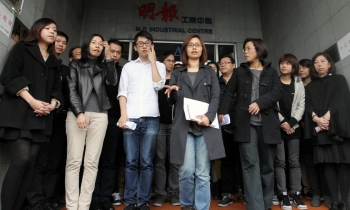Strategic training for journalists is helping news organisations build readership and drive online innovation, a new book has affirmed.
News, Improved: How America’s Newsrooms Are Learning to Change, which reports findings of the first-of-its-kind $10 million training and research project by the John S and James L Knight Foundation, comes at a critical time as the digital revolution transforms the news industry. The book also contains findings of a major survey on training for journalists by Knight Foundation.

“We found that savvy newsroom training helps journalists adapt quickly and creatively to changing audience preferences in print and online. We found the best journalists who get the right training embrace change, including multimedia platforms,” said Michele McLellan, the book’s co-author, who studied newsrooms ranging in size from the Atlanta Journal-Constitution to the Winona Daily News.
“The driver of these successes was staff development that bridged the divide between the newsroom of old and the one of the future,” said co-author Tim Porter.
“We’re not talking about just any old training. We’re talking about strategic training, the kind that can transform newsrooms into the 21st century workplaces they need to be to carry great journalism through America’s digital and demographic revolutions,” said Eric Newton, Vice-President/Journalism Programme, Knight Foundation.
Among the highlights are:
- The Herald-Times (Bloomington, Ind.) used training to institute a readership plan, improve newsroom culture, and encourage innovation on the Web. The newspaper requires that each staff member participate in at least 16 hours of training per year. Result: Increased print circulation and a 52 per cent boost in unique visitors to the paper’s website.
- Training at the La Crosse Tribune (Wis.) enabled newsroom executives to clarify and better communicate their vision to the newsroom. The newspaper provided 1,700 training hours in 2005, an average of 36 hours for each of the newsroom’s 47 professionals. Result: Award-winning journalism, a new section for an important demographic and improved workplace culture.
- The Atlanta Journal-Constitution made major improvements in news content by setting clear objectives for the newsroom and creating a dynamic training programme. The paper nearly tripled average training hours per employee between 2003 and 2006 and is requiring that each employee receive at least 30 hours in 2007. Result: Stronger storytelling, more enterprise stories and a more adaptive culture that quickly embraced multimedia journalism.
“News, Improved is an important contribution to the newspaper industry and I urge my colleagues to embrace the lessons that will work best in their newsrooms for their readers both print and online. As I’ve said before, I believe in journalism and in the future of news. This research offers tools to help us move toward that bright future,” says David Zeeck, Executive Editor, The News Tribune (Tacoma, Wash.) and President, American Society of Newspaper Editors (ASNE). Zeeck’s newsroom participated in the Knight initiative.
The book was released Tuesday at a conference prior to the start of ASNE’s convention. The initiative includes Tomorrow’s Workforce, a partnership of major news corporations and more than 50 national journalism professional and midcareer teaching organisations. It is based at the Medill School of Journalism at Northwestern University. Other participating projects are: The Learning Newsroom, the Committee of Concerned Journalists’ Traveling Curriculum, APME NewsTrain and The Poynter Institute’s News University.









